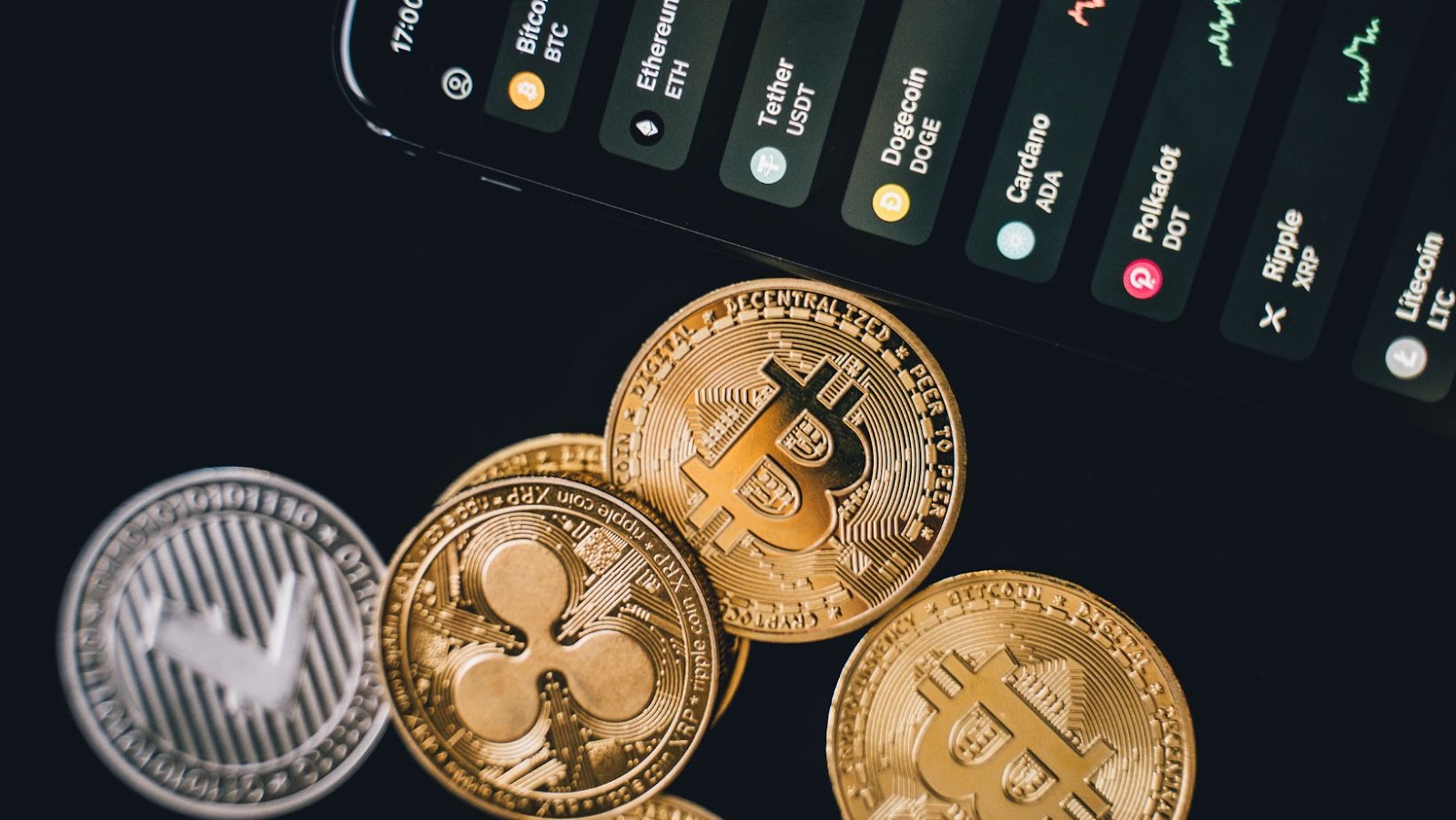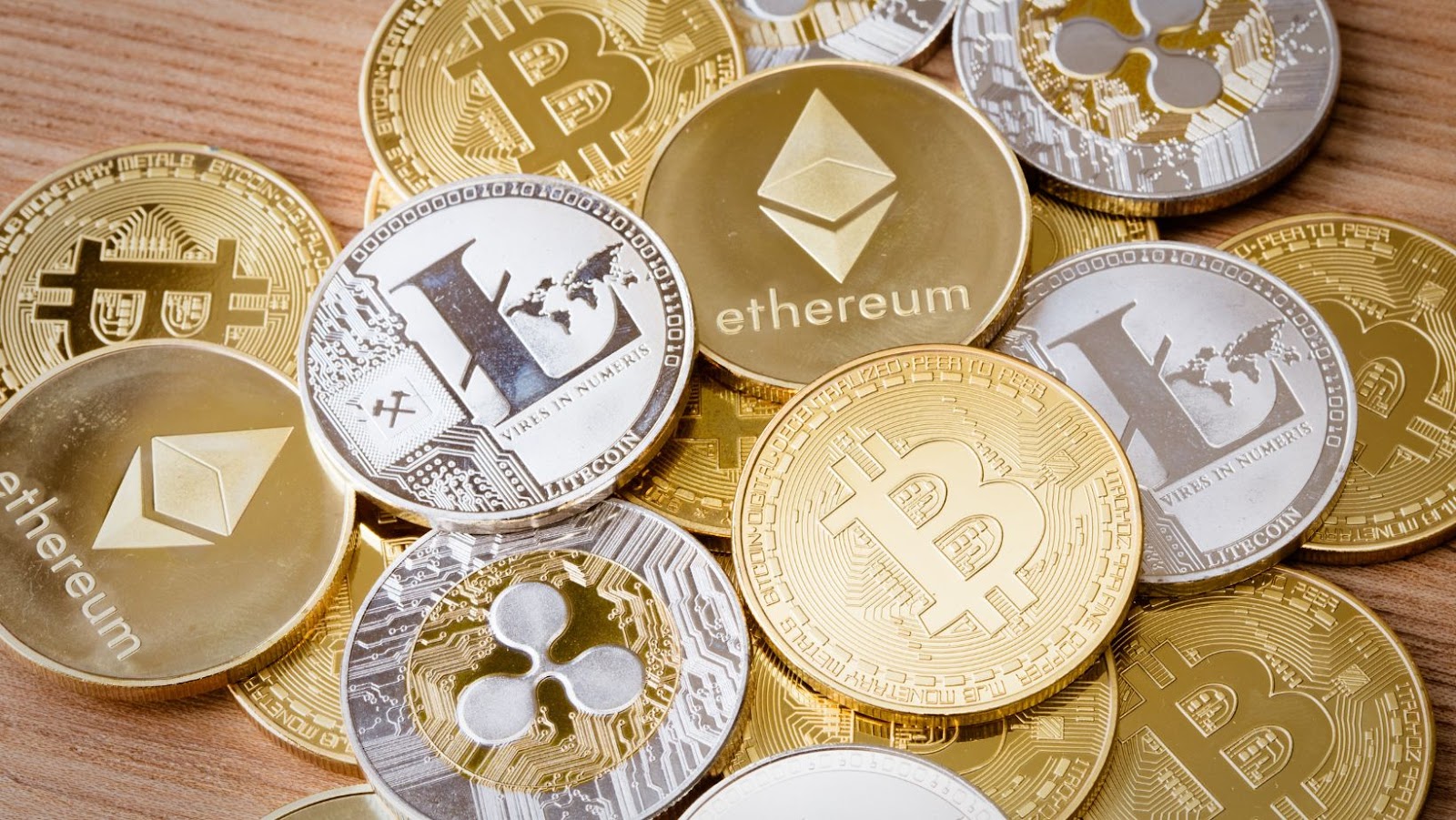Sam Bankman-Fried’s massive bet on a bitcoin miner is making waves in the community. The miner, called an ASIC, is designed to mine the cryptocurrency and is related to the success of the bitcoin network.
In this article, we’ll explore the significance of the bitcoin miner and how it affects Bankman-Fried’s $1B bet:
Definition of Bitcoin mining
Bitcoin mining is utilising computing hardware to verify transactions on the blockchain and add new blocks to the chains. The added blocks must adhere to certain rules enforced by specialised programs called ‘miners.’ Miners work together in a network, combining their computational power to create and manage secure digital ledgers that record all bitcoin activity.
Bitcoin miners provide important services for cryptocurrency users, ensuring the secure authentication and validation of all bitcoin transactions. By running a specialised software, miners compete to solve mathematical puzzles with a predetermined complexity level. If a miner can solve these puzzles first, they are rewarded with new bitcoins created out of thin-air and permanently added to the blockchain as part of their reward.
In addition to providing crucial network infrastructure services, Bitcoin miners also help increase user adoption by contributing resources needed for transaction confirmation. Without mineworkers, transactions would not be as easily verified and confirmed promptly – making it harder for people worldwide to benefit from Bitcoin’s many features.
Overview of Bitcoin mining
Mining is an important process of Bitcoin (and other digital currencies) that is essential for the cryptocurrency network to operate properly. It verifies transactions, adds them to the blockchain ledger and releases newly minted coins. In return for doing this “work” and lending their computing power to the network, miners are rewarded with new Bitcoins (and a portion of transaction fees).
Essentially, anyone can become a Bitcoin miner as long as they have access to the Internet and enough computing power to solve some of the difficult cryptographic puzzles used by Bitcoin. However, these puzzles are becoming increasingly difficult due to more miners joining the network which requires more computing power; making it especially hard for single home computers to compete with larger corporations who have invested in powerful rigs designed for this purpose.
It should be noted that while anyone can become a miner, not everyone will operate at a profitable level. However, mining can be profitable if done correctly so one must look into such information before investing considerable sums into hardware and accounts. Additionally, there are specialised mining pools where individual miners can pool their computational power together and split its rewards automatically according to how much each contributes – as well as group buying of ASIC miners which saves on cost but marginally on profits due exclusively in pool mining scenarios.
History of Bitcoin Mining
Bitcoin mining has been around since 2009 and has seen massive growth in the past decade. In late 2020, Sam Bankman-Fried made a massive investment in Bitcoin mining, investing $1 billion in a bitcoin miner. This bet has caused a major shift in the Bitcoin mining industry, and is a testament to miners’ importance and the industry’s potential.
Let’s take a look at the history of Bitcoin mining and how Bankman-Fried’s bet has further ignited the industry:
Genesis block
The genesis block is the first block in the Bitcoin blockchain and is also known as Block 0. It was mined by the anonymous Satoshi Nakamoto, who created Bitcoin in 2009. This first block was hard coded into the Bitcoin software and contained a reference to a newspaper headline regarding bank bailouts. Since then, miners have generated each new block that enters the blockchain using cryptographic proof of work.
Mining is essential to the functioning of Bitcoin’s distributed ledger technology – blockchain – without which no transactions could be conducted on the network or stored into its history. Without miners, transactions would languish forever and never be recorded to Bitcoin’s public ledger of past transactions (called a block). In addition, miners are rewarded for their computational efforts with newly created Bitcoins and fees from processed transactions by participating in mining activities.

Therefore, miners are significant players in how Bitcoin works – not just because they verify existing transactions and add new blocks but also because they provide secure communication between nodes (computers) on the network. Every node stores an up-to-date copy of the full blockchain and broadcasts any new blocks or updates to other parts of the network when miners find them.
Early Bitcoin miners
Bitcoin was invented in 2008, and it wasn’t until 2009 that the first block of Bitcoins, known as the genesis block, was mined. Bitcoin mining is both the process and the industry of confirming transactions associated with Bitcoin transactions in a block chain. Block chains are digital ledgers that keep track of all Bitcoin transactions.
Early miners used basic computer processors (CPUs) to mine, but quickly moved on to graphic processing units (GPUs), which are more powerful than CPUs and offered increased mining speed. As activity in the Bitcoin network grew, more advanced and powerful hardware was required to meet demand. In 2013, application-specific integrated circuit chips (ASICs) were released specifically for mining Bitcoin, taking over from GPUs as ASICs were far faster when mining for bitcoins compared with other tech solutions.
Today, specialist hardware is required for mining due to its sheer difficulty level since only a single solution can be found out of all possible guesses created by the cryptographic hashes inherent in blockchain technology. Cloud-based mining solutions have also become very popular because they allow users to rent their own SHA-256 ASIC miners without investing in hardware.
The rise of ASIC miners
ASIC miners (applications-specific integrated circuits) are specialised computer hardware for mining cryptocurrencies, such as Bitcoin. These machines are much more efficient than regular computers as they are designed to handle the specific algorithms associated with cryptocurrency mining. ASIC miners make up the majority of bitcoin miners in the market today, having taken over from GPUs and FPGAs in recent years.
Introducing ASIC miners into the Bitcoin market was a major step forward in terms of efficiency and profitability. Before ASICs were developed, programming general-purpose CPUs or GPUs were necessary to mine bitcoins. This is due to them being less powerful than an ASIC, which was built with bitcoin mining in mind specifically. With an ASIC miner, you can expect a much better performance compared to any traditional computing hardware used for cryptocurrency mining today.
Moreover, using ASICs also offer users a level of stability they wouldn’t otherwise have due to their ability to continuously solve complex calculations efficiently and accurately at all times. As the difficulty levels increase with more and more miners joining in on solving blocks for rewards, users must maintain stable hash rates at all times before profits can be made from their investments into computing power for crypto-mining purposes.
Significance of Bitcoin Mining
Sam Bankman-Fried’s $1 billion bet on a bitcoin miner has made waves in the crypto industry. Mining crypto is a process of solving complex equations to receive rewards in the form of cryptocurrency. The use of miners to mine Bitcoin is becoming increasingly popular, as this allows for more efficient and secure transactions.

In this article, we will explore the significance of a Bitcoin miner and its implications for the future of the crypto space.
Security of the Bitcoin network
Miners maintain the security of the Bitcoin network. Mining is a process by which complex mathematical problems are solved to create the Bitcoin blockchain and allow transaction verifications. Since Bitcoin is a decentralised, distributed system, it relies on miners to secure its network without the presence of a central authority.
Mining involves specialised computer hardware that performs complex mathematical computations to solve blocks within the Bitcoin protocol. Miners receive rewards for their work in the form of newly created coins and network fees for each time they successfully mine a block in addition to transaction fees in each block’s transactions. The rewards help incentivize miners and maintain the network’s integrity through large-scale competition, ensuring that no malicious user or entity will be able to monopolise control over it.
Mining also provides an opportunity for miners to be rewarded with new Bitcoins, allowing them to potentially make a profit while helping ensure the security and longevity of the Bitcoin network. As more people become aware of this innovative technology, more join the race in mining, attempting to reap similar benefits and contributing towards maintaining its decentralisation and distribution within its vast growing user base.
Control of the Bitcoin supply
The process of verifying and validating Bitcoin transactions is called Bitcoin mining. Miners use specialised computer hardware to solve complex maths problems, add blocks of transactions into the blockchain, keep the network secure, and gain rewards for their work. By doing this work, miners can control the supply of Bitcoin by determining how much is in circulation.
Mining rewards control how much new Bitcoin is distributed to miners as an incentive for their work verifying transactions and helping secure the blockchain. In addition, many miners build pools which enable them to share mining power across multiple machines and increase their chances of getting rewarded for their efforts. The reward for mining halves every four years or so, as specified by the protocol carried out in Satoshi Nakamoto’s original whitepaper on Bitcoin that serves as the technical foundation for all aspects of the network.
In short, miners control both the distribution and the overall supply of Bitcoin because they are responsible for confirming transactions and recording them onto each block on the ledger; they play an instrumental role in ensuring that only legitimate activities occur on this blockchain – ensuring its trustworthiness.
Profitability of Bitcoin mining
As with other cryptocurrencies, mining is integral to becoming a successful Bitcoin user. Mining refers to verifying and adding transactions to the Bitcoin blockchain ledger for users to gain access to their coins. Without miners, no one would be able to use or accept Bitcoin as payment, and the value of the cryptocurrency would be greatly decreased.
In addition to maintaining and verifying transaction records on the blockchain, miners are incentivized financially as they receive unpaid transaction fees from each block they produce. How profitable this is for miners depends on several factors:
- Cost of electricity: Electricity costs can make up a large portion of a miner’s expenses
- Hash rate: Higher hash rates increase chance of discovering new blocks in a given timeframe
- Difficulty rate: When network difficulty increases, the reward for successfully discovering a new block decreases
- Coins earned/base fee: Network base fee is set by miners themselves and determines how much reward they will receive when they discover new blocks
- Reward per block found: The current reward per block found is 6.25 BTC
- Price of bitcoin (BTCUSD): At higher prices, miners’ profits increase due to higher market capitalization values; at lower prices, revenue decreases as well.
Overall, many factors will determine how profitable bitcoin mining can be; however, it is important to note that regardless of whether it is done professionally or casually, all participants in the ecosystem play an important role in maintaining its stability and value.
Sam Bankman-Fried’s $1B bet on a bitcoin miner
Sam Bankman-Fried, the founder and CEO of Alameda research has made a bold move, investing $1B in a bitcoin miner. This is a first for the crypto industry, and signals a shift in the traditional financial landscape. But what does it mean for the cryptocurrency industry, and what does a bitcoin miner do? Let’s take a closer look.
Overview of Sam Bankman-Fried
Sam Bankman-Fried is a crypto dynamo who recently bid $1 billion on a bitcoin miner. The 28-year-old entrepreneur is the CEO of Alameda Research, a crypto trading firm, and FTX, an exchange specialising in derivatives products.
Sam first came to prominence when he founded derivatives platform Quanticle in 2017. After recognition in the tech world – particularly within the world of cryptocurrency startups – Sam quickly developed ties to some of the industry’s biggest names, including Peter Thiel (whose venture capital firm Founders Fund invested in Quanticle) and Chris Dixon (The former General Partner of Andreessen Horowitz).

Since then, Sam has become one of the most influential players in finance – often referred to as “the kingmaker” by his peers for being able to “move markets or make strategies that do so” – and one of today’s most prolific investors. He has quickly become known for making bold moves such as his billion-dollar bitcoin mining investment.
His investment in a bitcoin miner
Sam Bankman-Fried (also known as SBF), a 29-year-old entrepreneur and quantitative trader, recently made a daring investment in cryptocurrency. By forming a publicly traded holding company, he invested $1 billion in one of the top Bitcoin miners, Marvell Technology Group. His bold move has launched him into the spotlight and is seen as another example of Bitcoin revolutionising the tech industry.
So what is a Bitcoin Miner? In its simplest form, it is a computer that participates in the network to validate new transactions before they become part of the permanent record unit called blockchain. All computers need energy to operate, but bitcoin miners require enormous power to carry out their computations. Because this power usage can be expensive and takes up additional space within a building or residence, companies have started investing in large scale mining operations that are run on dedicated mining rigs. These mining rigs are built with specialised hardware designed specifically for mining cryptocurrencies such as Bitcoin (BTC). Every time someone wants to make an exchange on the blockchain network, these miners must compete against each other to earn cryptocurrency rewards for their work in verifying those transactions.
By investing in one of these top bitcoin miners, SBF hopes to not only benefit financially from his investment but also influence the direction of cryptocurrency development by controlling how commercial transactions are verified on the blockchain network. With his business acumen and technical knowledge about blockchain technology, SBF has established himself as a leader among entrepreneurs who wish to take advantage of digital currencies’ potentials.
His rationale for investing in a bitcoin miner
Sam Bankman-Fried, the CEO of FTX, recently made a bet of $1 billion on a bitcoin miner. He believes this type of miner is the key to solving various problems for miners.
A Bitcoin miner is a computer running specialised software to solve cryptographic puzzles that result in new blocks being added to the Bitcoin blockchain network. This network is responsible for verifying transactions and adding them to existing blocks in the chain. For each new block, miners are rewarded with newly-created Bitcoin (BTC) coins. This process is known as “mining” and ensures that no one person controls the network or can use it maliciously.
By investing in this specific miner, Bankman-Fried is banking on the idea that it will increase efficiency and reduce costs associated with mining operations. Additionally, he believes it could lead to wider acceptance and even adoption of Bitcoin by mainstream investors due to increased confidence in its safety and security. He also expects greater decentralisation among miners as this machine allows smaller miners to acquire their machines instead of relying on private mining pools or data centres owned by big companies like Bitmain or Ethereum mining pools owned by large corporations like CloudHashing or Genesis Mining.
Finally, Bankman-Fried also thinks investments such as these could help spur innovation within the space and lead to more powerful hardware solutions that will facilitate faster transactions and lower transaction costs within the network – making cryptocurrency more accessible and attractive for all investors worldwide!
tags = sam bankman-fried hedge fund, $1 million bet on general digital assets, red-hot crypto startup world, crypto ftx 2b 100kchernova wall streetjournal, crypto 2b 100kchernova streetjournal, crypto ftx 2b 100kchernova streetjournal, bankman-fried company, $60 million investment on genesis digital, bet on bitcoin miner, cyprus-registered bitcoin miner

